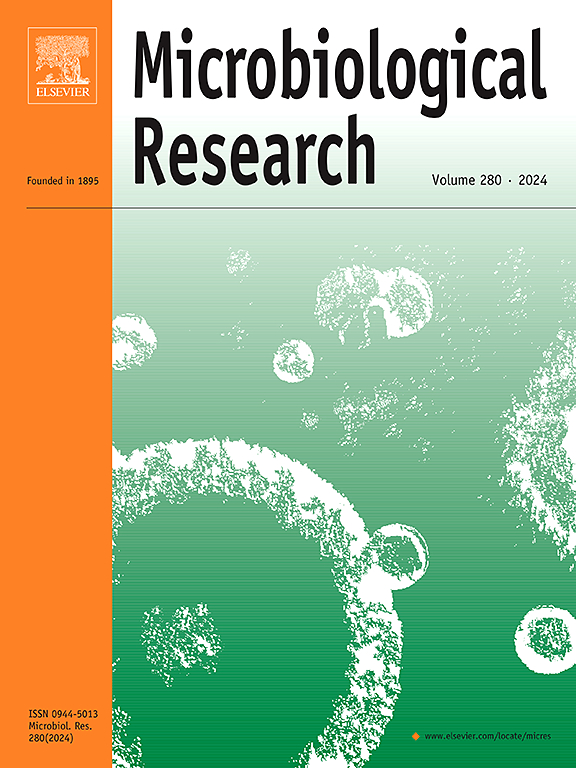The expanding antimicrobial diversity of the genus Pantoea
IF 6.9
1区 生物学
Q1 MICROBIOLOGY
引用次数: 0
Abstract
With the rise of antimicrobial resistance, there is high demand for novel antimicrobials to combat multi-drug resistant pathogens. The bacterial genus Pantoea produces a diversity of antimicrobial natural products effective against a wide range of bacterial and fungal targets. These antimicrobials are synthesized by specialized biosynthetic gene clusters that have unique distributions across Pantoea as well as several other genera outside of the Erwiniaceae. Phylogenetic and genomic evidence shows that these clusters can mobilize within and between species and potentially between genera. Pantoea antimicrobials belong to unique structural classes with diverse mechanisms of action, but despite their potential in antagonizing a wide variety of plant, human, and animal pathogens, little is known about many of these metabolites and how they function. This review will explore the known antimicrobials produced by Pantoea: agglomerins, andrimid, D-alanylgriseoluteic acid, dapdiamide, herbicolins, pantocins, and the various Pantoea Natural Products (PNPs). It will include information on the structure of each compound, their genetic basis, biosynthesis, mechanism of action, spectrum of activity, and distribution, highlighting the significance of Pantoea antimicrobials as potential therapeutics and for applications in biocontrol.
盘尾丝菌属抗菌多样性的不断扩大。
随着抗菌素耐药性的增加,人们对新型抗菌素的需求量很大,以对抗具有多重耐药性的病原体。盘尾丝菌属可产生多种抗菌天然产物,对多种细菌和真菌靶标有效。这些抗菌素是由专门的生物合成基因簇合成的,这些基因簇在盘尾丝菌属以及埃文菌科以外的其他几个属中都有独特的分布。系统发育和基因组学证据表明,这些基因簇可以在种内和种间调动,也可能在属间调动。盘菌抗菌素属于独特的结构类别,具有不同的作用机制,但尽管它们具有拮抗多种植物、人类和动物病原体的潜力,人们对其中许多代谢物及其功能却知之甚少。本综述将探讨泛影菌产生的已知抗菌素:agglomerins、andrimid、D-丙氨酰草酸、dapdiamide、hermicolins、pantocins 和各种泛影菌天然产物(PNPs)。它将包括每种化合物的结构、遗传基础、生物合成、作用机制、活性范围和分布等信息,突出泛影菌抗菌剂作为潜在疗法和生物防治应用的重要性。
本文章由计算机程序翻译,如有差异,请以英文原文为准。
求助全文
约1分钟内获得全文
求助全文
来源期刊

Microbiological research
生物-微生物学
CiteScore
10.90
自引率
6.00%
发文量
249
审稿时长
29 days
期刊介绍:
Microbiological Research is devoted to publishing reports on prokaryotic and eukaryotic microorganisms such as yeasts, fungi, bacteria, archaea, and protozoa. Research on interactions between pathogenic microorganisms and their environment or hosts are also covered.
 求助内容:
求助内容: 应助结果提醒方式:
应助结果提醒方式:


